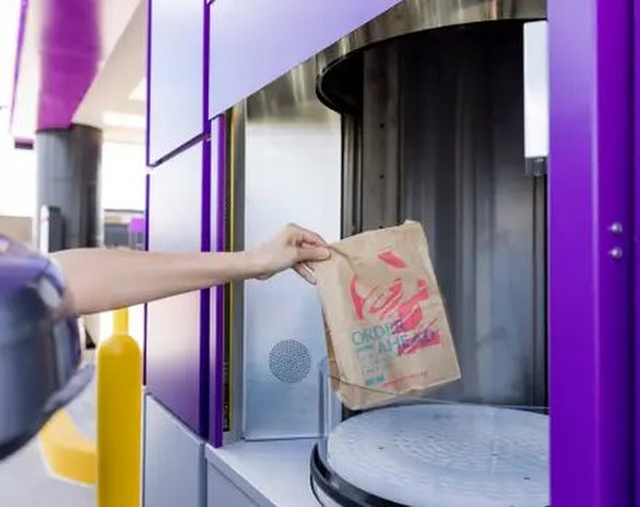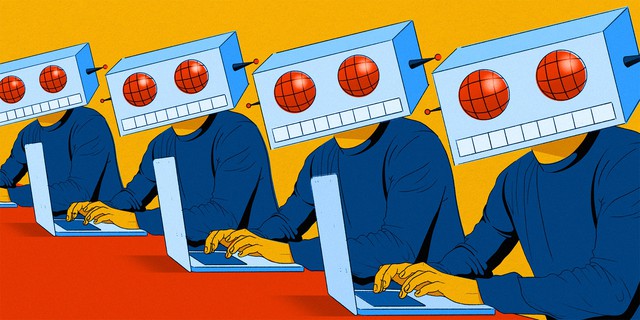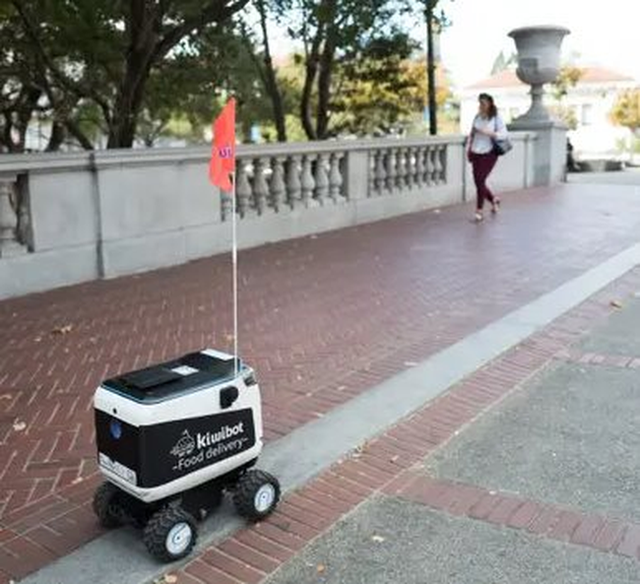The ‘dark’ corner of AI artificial intelligence: Not helping people, it is even ‘eroding’ them
- Tram Ho
Since ChatGPT took the world by storm last November, many have hotly debated the impact artificial intelligence and automated technology will have on the US job market.
The story “robots are taking our jobs” was further spread when videos of McDonald’s and Taco Bell stores having some automated operations went viral.
Many people around the world were “startled” when watching these videos. It seems that robots or automated technology are replacing some human jobs. In practice, however, it does not completely eliminate humans in that field. Technology is simply changing the way people do things.
Automation technology has created a secret team behind screens and machines. Robots and chatbots do not replace humans. The use of technology brings many benefits to businesses but also brings some disadvantages for employees.
Is it possible to replace it?
As AI appears more in people’s daily lives, for example McDonald’s service robots, the first reaction will be to enjoy seeing these activities.
In addition to self-service robots, McDonald’s video also shows a fully automated machine repeatedly performing operations to deliver food to customers at kiosks in the form of drive-thru. service where customers can buy food directly in their car).

McDonald’s Automated Food Delivery Service
At Taco Bell, there are not only machines to deliver food to customers using the drive-thru service, but also “eye-catching” robots working in cafes, delivering food. eat and clean the floor.
As for tools like ChatGPT, this tool is gradually being used to write actual articles or even solve exam questions. BuzzFeed also recently announced plans to use AI to create content for its website.
But in some cases, videos of the “working” of the robot will also make people confused about their own “rice and clothes”. However, it will not be replaceable.
In December 2022, McDonald’s tested a model of a store in the suburbs of Fort Worth, Texas, USA. This shop establishment has absolutely no dining tables or chairs. Instead, the food will be delivered straight to the customer, who has pre-ordered and is just driving to pick it up.
This model is said to aim to improve speed as well as cut labor costs. However, this does not mean that the store does not have people. If you pay close attention, in the video introducing the automatic model of McDonald’s, there is still an employee behind the glass window.
McDonald’s has said that the store is not “fully automated” and that it employs a similar number of employees as a brick-and-mortar store. But they will be in the back to make the food and maintain the way the store is run.
Or while most customers will never see Taco Bell employees at stores with auto models, the reality is that there are plenty of employees working in the kitchen area.
These automated models are programmed to be more complex, but this is not the first time robots have “threatened” human activities.

Nearly 10 years ago, new developments in technology sparked similar fears that robots would come and replace humans. A 2014 analysis suggested that automation will wipe out 47% of all jobs by 2034. Self-driving technology will leave taxi drivers and delivery people unemployed, or even road drivers. Long is no exception.
And in fact, nearly a decade later, these dire predictions have not materialized. Truck drivers are still in demand, and self-driving technology has yet to replace humans.
A 2020 report by the World Economic Forum estimated that if by 2025 85 million jobs will be replaced by machines, about 97 million new jobs are expected to be created to support the economy. this new economy.
Humans support tools but are ‘manipulated’ by tools?
Amid the fear of robot replacement, people often forget that, to some extent, machines still need humans to operate.
Perform customer service: For years, businesses have been trying to cut staffing costs by replacing human-spoken phone calls with automated customer care tools. However, these tools still seem to only chat based on human backup documents to respond in complex situations to help customers feel like they are talking to real people.
Recently, Laura Preston wrote about her experience working as one of the backup “backups” for a real estate chatbot called Brenda.
When a customer wants to talk to someone about a listing, they’re connected to Brenda, an automated tool that can answer basic questions about listings or provide pricing details. rent or the area of the apartment.
But many of Brenda’s answers are stuck or the tool sometimes can’t answer complex questions. It is at this moment that people are needed. Preston and the other “human” employees will take over the conversation. They will address a client’s needs, delving deeper into the housing vouchers and pet policy that accompanies the property to provide up-to-date information to the client.
According to Preston, “human” agents have been trained to use Brenda’s “voice” in interactions in an attempt to make the conversation seamless. And trying to answer a bunch of questions by closing automated tools has resulted in serious morale loss.
“The days of impersonating Brenda drained my emotional resources. I suddenly realized that I wasn’t really training Brenda to think like a human, Brenda was manipulating me to think like a tool,” Preston said. speak.
Food delivery robots: Although this model is presented as fully automated, the reality is that they often have remote backup control. A robotic delivery service in Toronto called Tiny Mile shared that the company still needs “human” drivers to control the back-end transportation. Or the Kiwi robot, the delivery tool used in some universities in the US, is also known to employ people in Colombia with wages of less than $2 an hour to help complete deliveries.

Kiwi robot, delivery tool used in some universities in the US
The companies say remote workers will take over or assist with troubleshooting when the robot is unable to navigate a situation such as being stuck or becoming an obstacle to pedestrians on the sidewalk. summer. However, how often it happens is often not announced.
Refer to BI
Source : Genk
